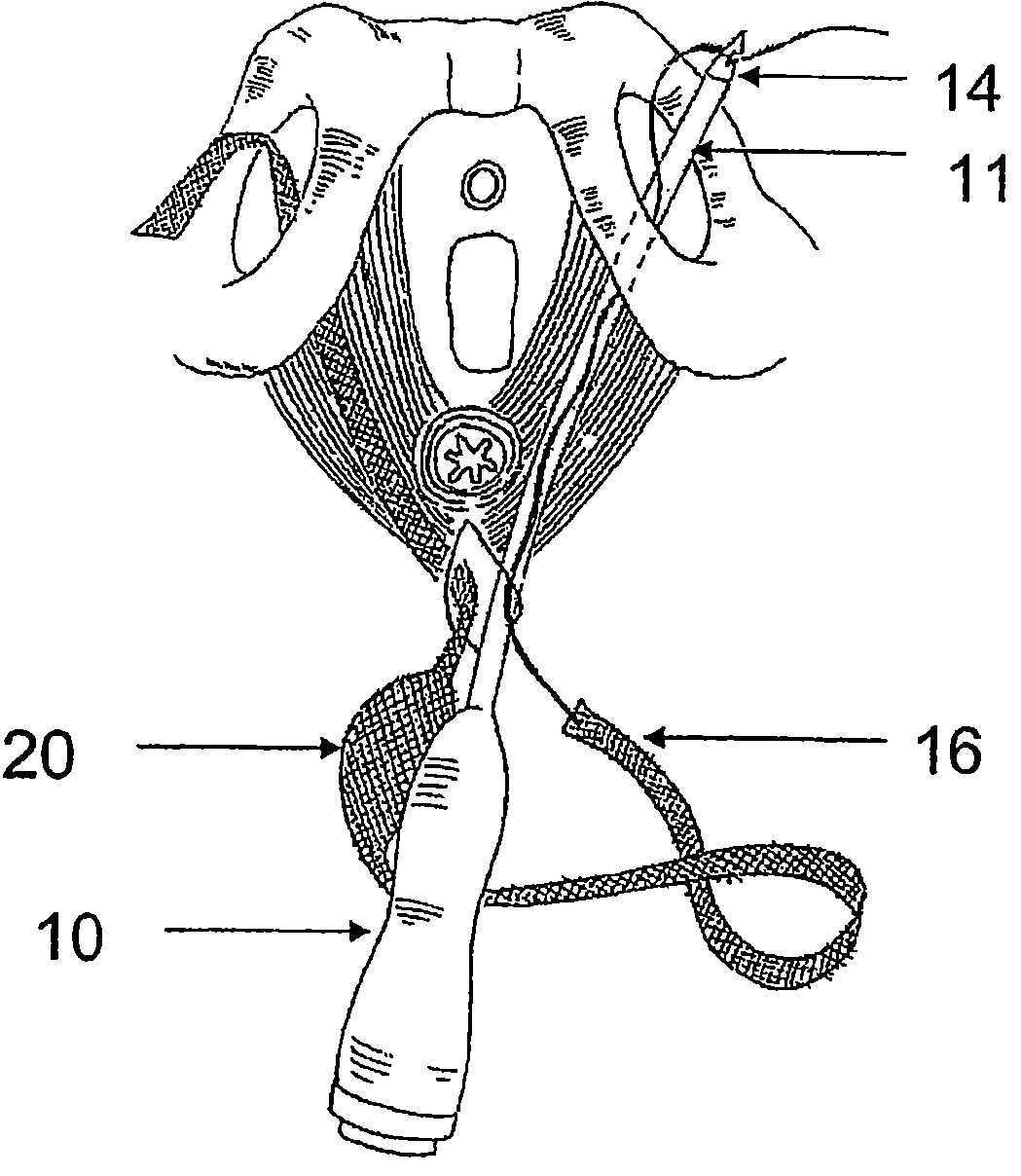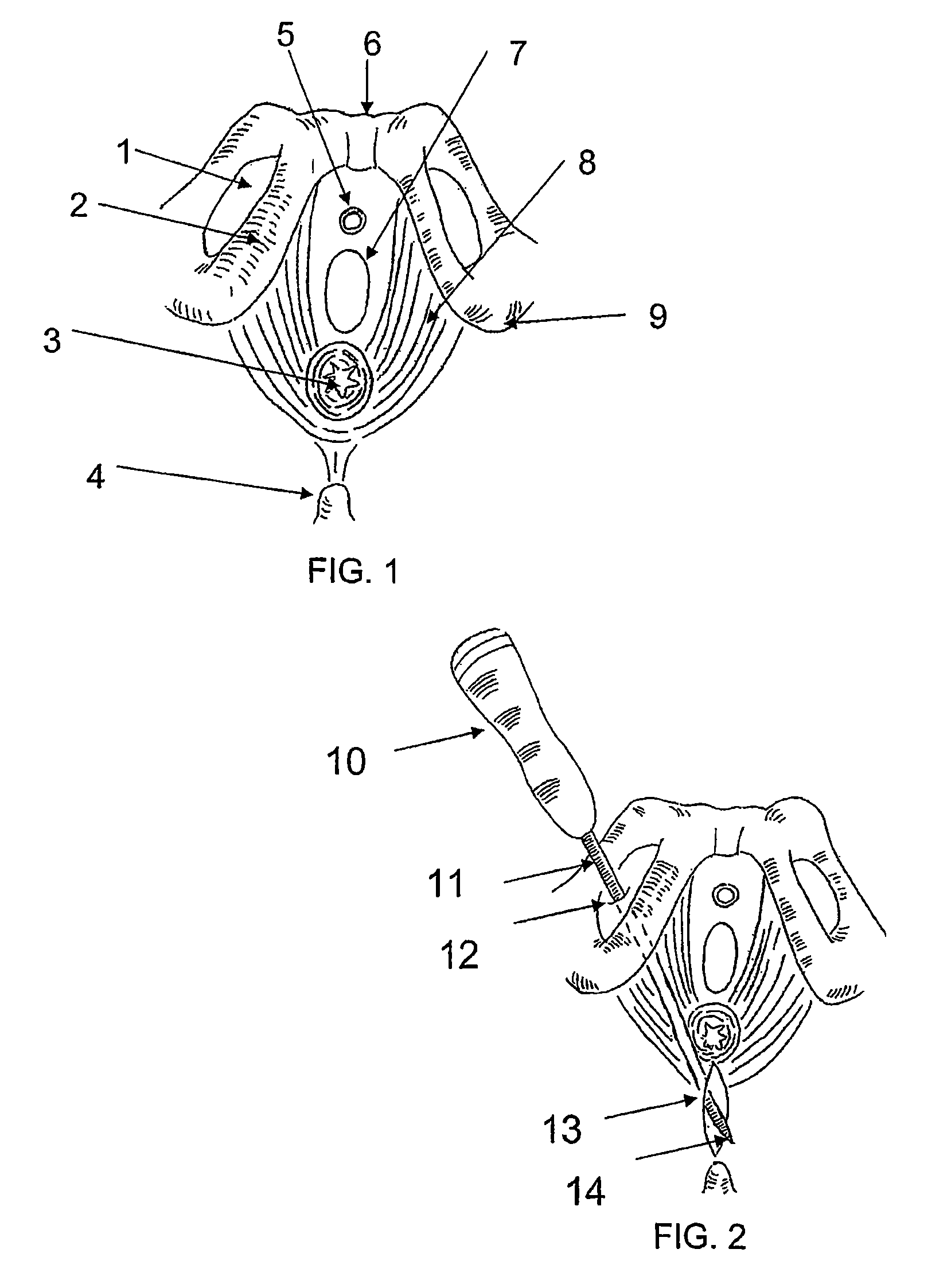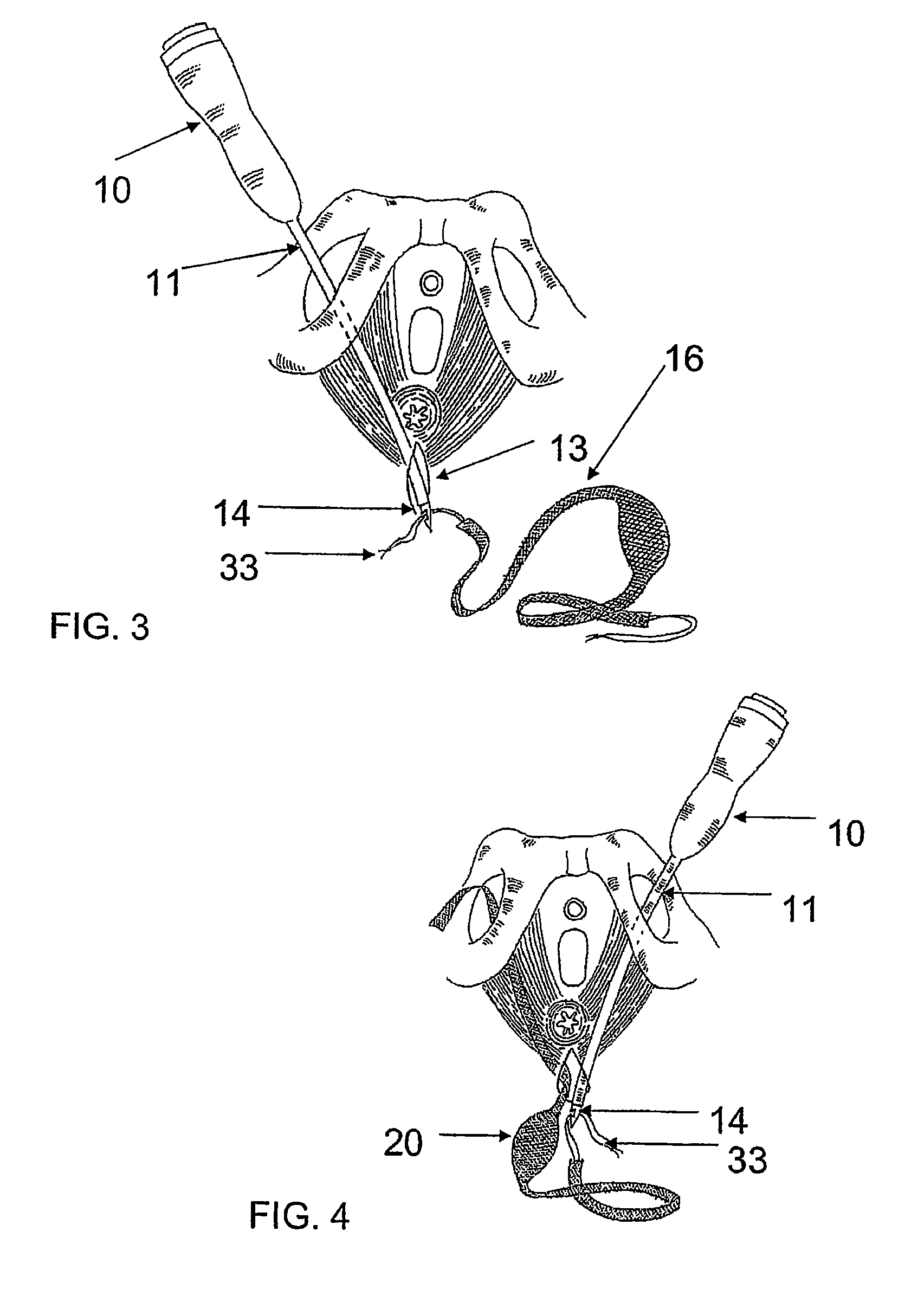System and method for treatment of anal incontinence and pelvic organ prolapse
a technology for pelvis and incontinence, applied in the field of system and method for treating anal incontinence and pelvis organ prolapse, can solve the problems of frequent complications, indirect injury of these muscles, and common anal incontinence, and achieve the effect of facilitating minimally-invasive treatment of anal incontinen
- Summary
- Abstract
- Description
- Claims
- Application Information
AI Technical Summary
Benefits of technology
Problems solved by technology
Method used
Image
Examples
Embodiment Construction
[0030]The present disclosure provides a variety of systems and methods for treating anal incontinence. The normal ano-rectal angle can be restored by inserting a disclosed device under the posterior rectum, which may be supported with a synthetic or natural material in a sling-like position behind the anus and / or rectum. A posterior supporting apparatus may provide partial or complete closure of the rectum and / or anus with the posterior supporting apparatus.
[0031]In one embodiment, a synthetic or natural sling material may be placed under the rectum and may be supported by its arms, which may be extended up in a sling-like fashion through the obturator foramen bilaterally, or retropubically to the suprapubic region. In another embodiment, the device placed posterior to the rectum may include an inflatable or fluid-filled sac, which may or may not be adjusted post-operatively, by either changing its position or by altering the amount of fluid material, for example saline or a hydroge...
PUM
| Property | Measurement | Unit |
|---|---|---|
| length | aaaaa | aaaaa |
| ano-rectal angle | aaaaa | aaaaa |
| flexible | aaaaa | aaaaa |
Abstract
Description
Claims
Application Information
 Login to View More
Login to View More - R&D
- Intellectual Property
- Life Sciences
- Materials
- Tech Scout
- Unparalleled Data Quality
- Higher Quality Content
- 60% Fewer Hallucinations
Browse by: Latest US Patents, China's latest patents, Technical Efficacy Thesaurus, Application Domain, Technology Topic, Popular Technical Reports.
© 2025 PatSnap. All rights reserved.Legal|Privacy policy|Modern Slavery Act Transparency Statement|Sitemap|About US| Contact US: help@patsnap.com



